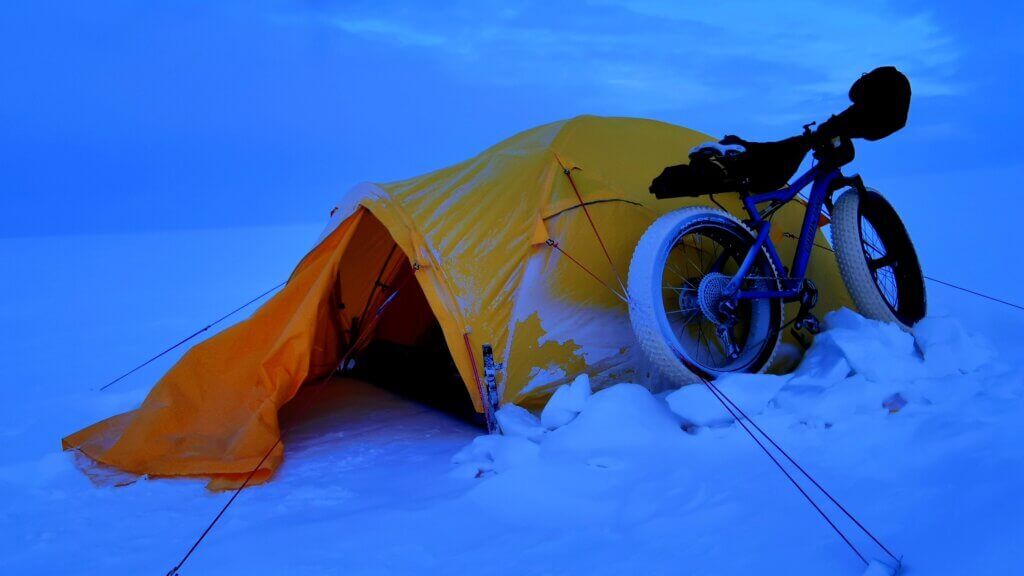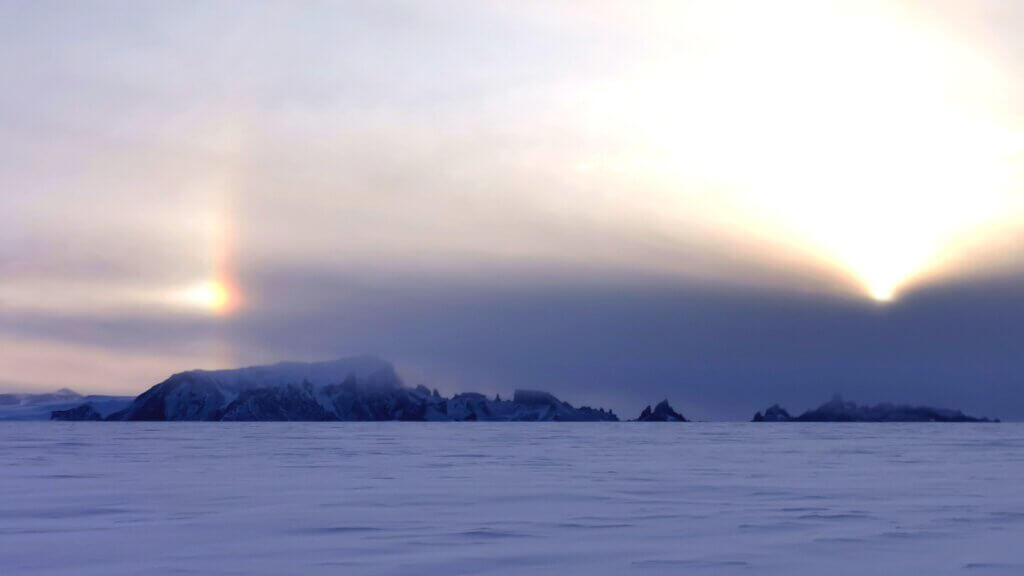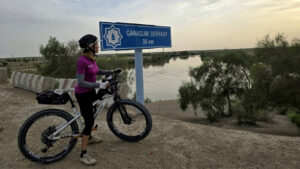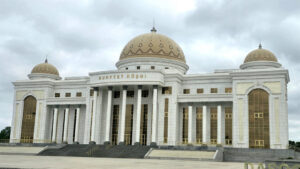Day 2
9th February | Distance – 32km |Total distance – 67km
The uphill, into the wind battle resumed on some pretty soft snow. I decided to divide my day into 10km segments, then take a break, refuel, warm up and go again. It turned out to be a good mental approach.
The contrast was not great in the morning, though I could see enough, but it got worse from there. Cycling with no point of reference and in increasingly soft snow, it was very difficult to get started and then stay on the bike. It was quite disorientating, almost cycling blind. Very difficult mentally and I struggled to drive away negative thoughts. I really wasn’t enjoying this and started to question my motives.
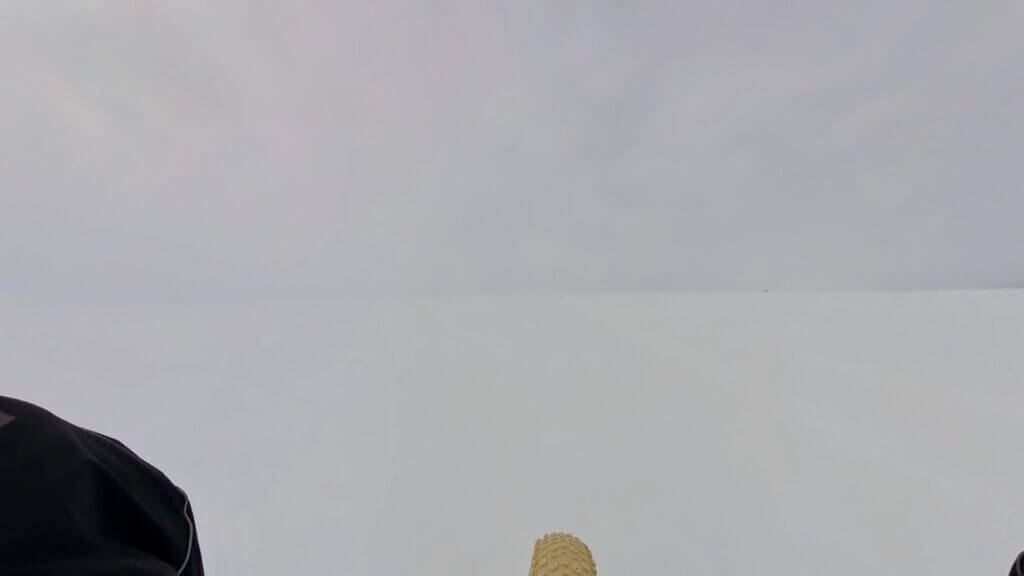
We reached a high plain where the snow became very soft. Even the Arctic Truck became bogged! I ended up pushing for at least 7km. The only way to approach this is just keep moving forward, knowing that the conditions had to improve at some stage.
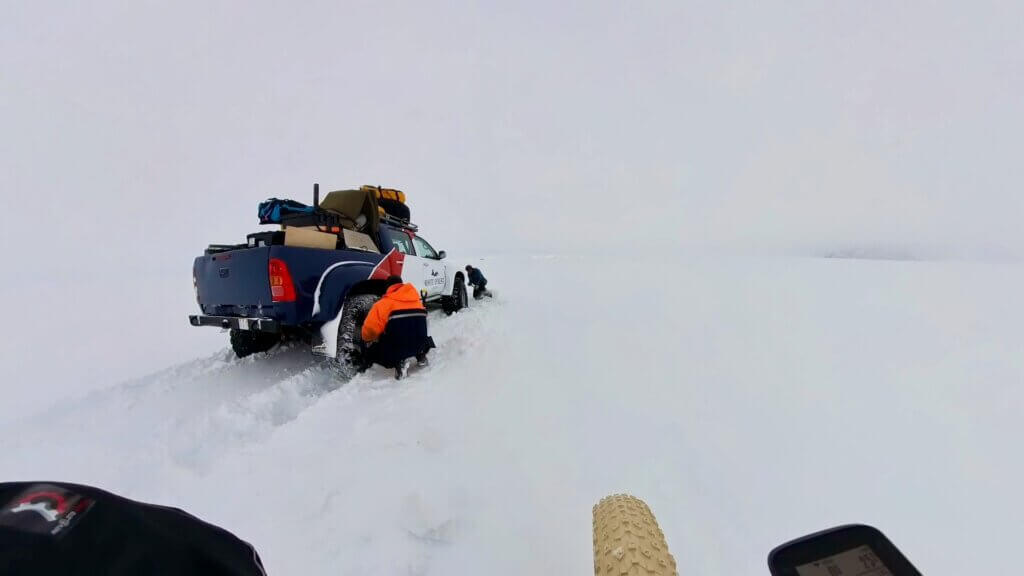
Oleg arranged for one of the Basler pilots to drop my sleeping bag off. It was quite surreal to watch the plane circle us while we waited and then swoop low to drop the bag for us to collect! I walked another 2km just so I wouldn’t have to do it tomorrow and called it quits for the day after just 32km.
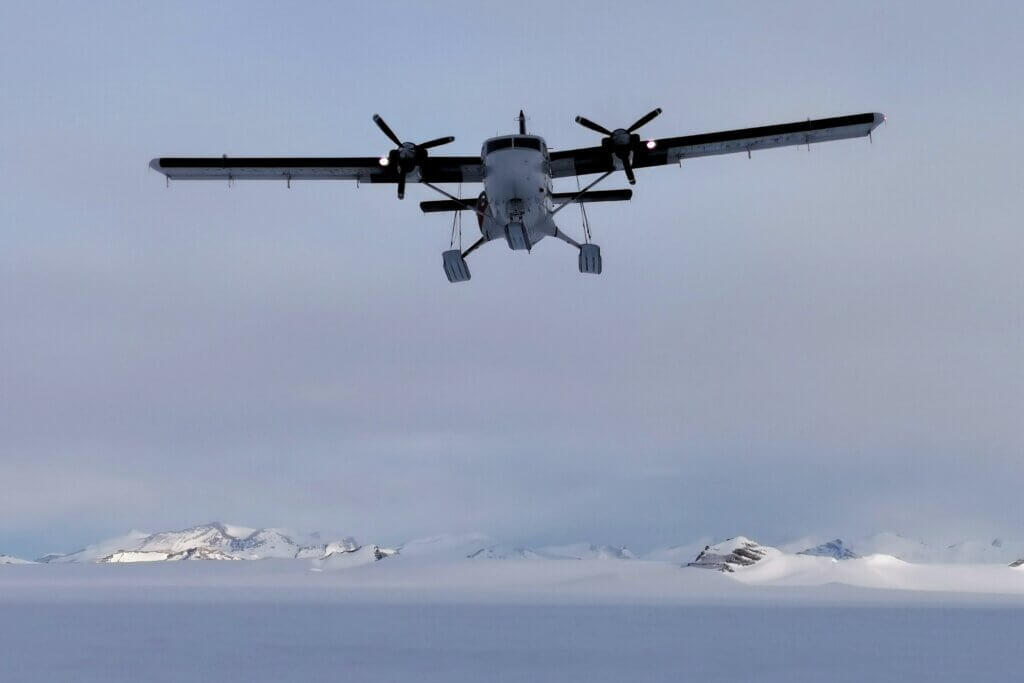
The Day 2 campsite was spectacular with a chain of mountains ahead and a few more to the east. As the sun lowered in the sky, we were treated to a brilliant sun dog (looks like a rainbow, the reflection makes a giant halo around the Sun).
Day 3
10th February | Distance – 40km | Total distance – 107km
A clear morning with good visibility made all the difference. On essentially the same terrain that I had to walk the previous evening, I could now cycle steadily, slowly – at least keep the wheels turning at around 6km/hr. I headed south towards the mountains and then east, running parallel to them while gradually ascending.
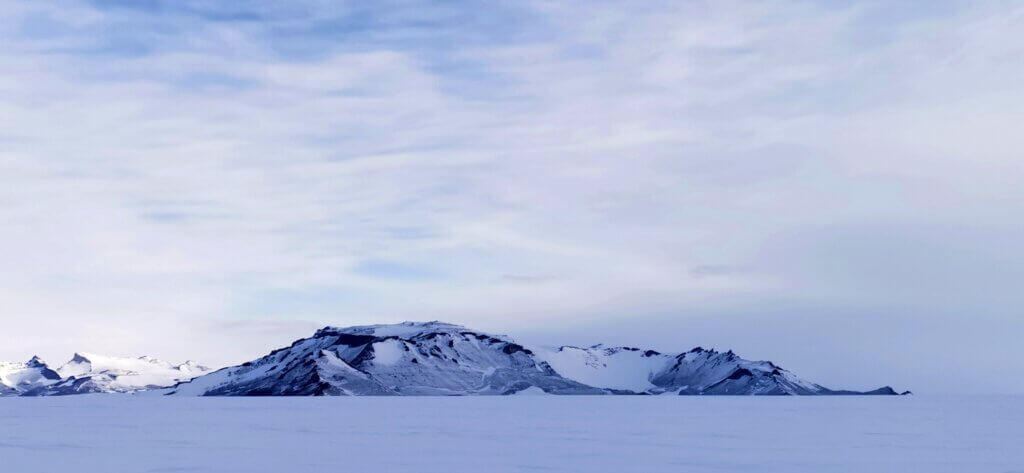
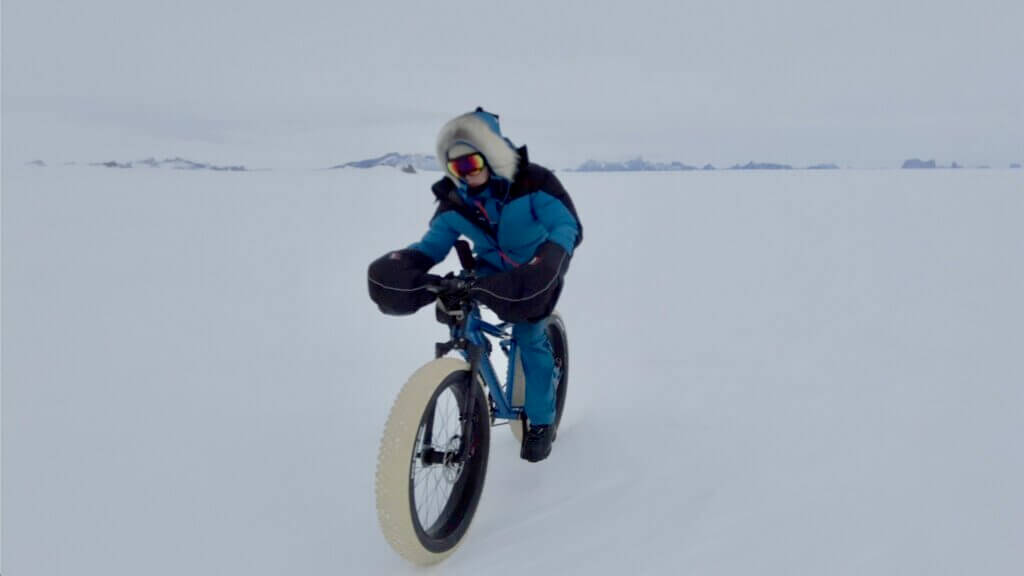
I think the key to cycling in these very soft conditions is to maintain a very low gear and pedal as evenly as possible with a faster cadence. Trying to drive a big gear with more power will waste a lot of energy because the wheels will slip more, forcing me to plough deeper through the loose, soft snow. It is all about pacing to be able to do this all day. I try to relax my shoulders as much as possible, but the upper body and core are always working much harder and in a sustained way compared to any other form of cycling I know.
Correct tyre flotation and pressure are fundamental. I am using 4.8″ (12cm) wide tyres – the maximum width commercially produced. The VEE Tire Co also makes a 5.05″ tyre but it has so far proven difficult to produce these with uniform qualities because the soft compound sometimes stretches and loses shape when the volume is so great. I love the soft white PSC compound because it functions very well at low pressures with very good grip and the white compound actually helps to shed snow. Black tyres create more heat from friction and snow tends to stick to the tread, adding weight and reducing traction. My mechanical tyre pressure gauge wasn’t working on this expedition, but in the softest conditions, I will drop the tyre pressure to about 4.5 – 5.5 psi.
After 11km I reached Mount Rikkie, the high point (1680m) and a turning point on the expedition. From there I freewheeled for a couple of hundred metres and then entered high rolling plains covered with sastrugi. To make matters more challenging, the contrast diminished and I struggled to differentiate the shapes and depth of the wind carved ice and snow. At one stage I fell heavily, fully testing the collarbone I broke 18 months ago. The metal plate held firm.
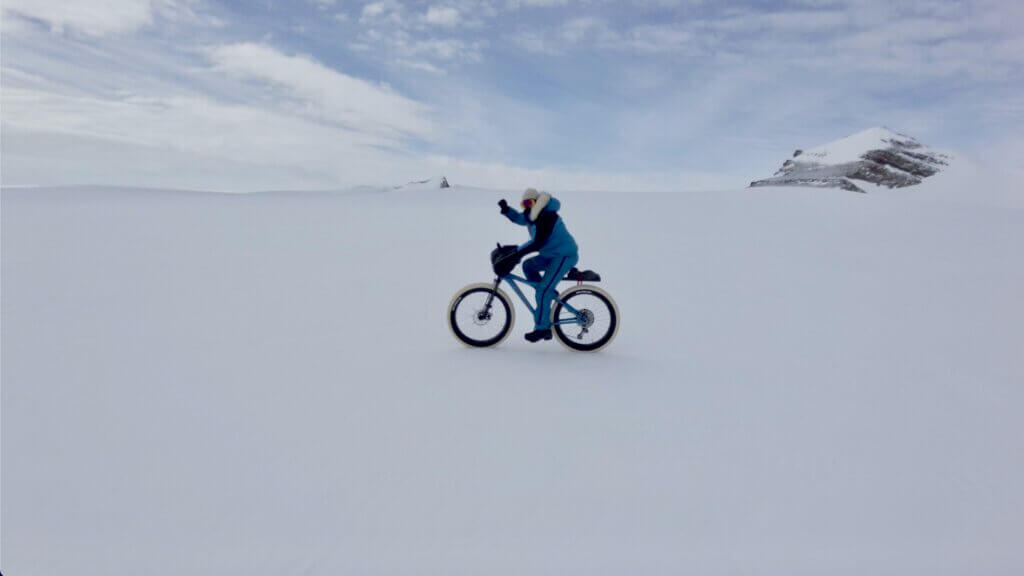
With the crosswind strengthening and the contrast low, the next obstacle was another ice field, this time on a slope. I was terrified of falling again and felt extremely tense. I fought to hold my nerve with the crosswind threatening to push me sideways down the slope. There were shallow furrows filled with snow that were better for grip but if I did anything except keep my wheels precisely perpendicular, I would slip. The vehicle was well ahead and I was without crampons if I fell. Somehow I made it through without another crash, but now I was almost cycling blind over sastrugi. I persisted up the hill but in the end, exhausted and deeming it too dangerous, I pushed the last 1.5km to the end of the day.
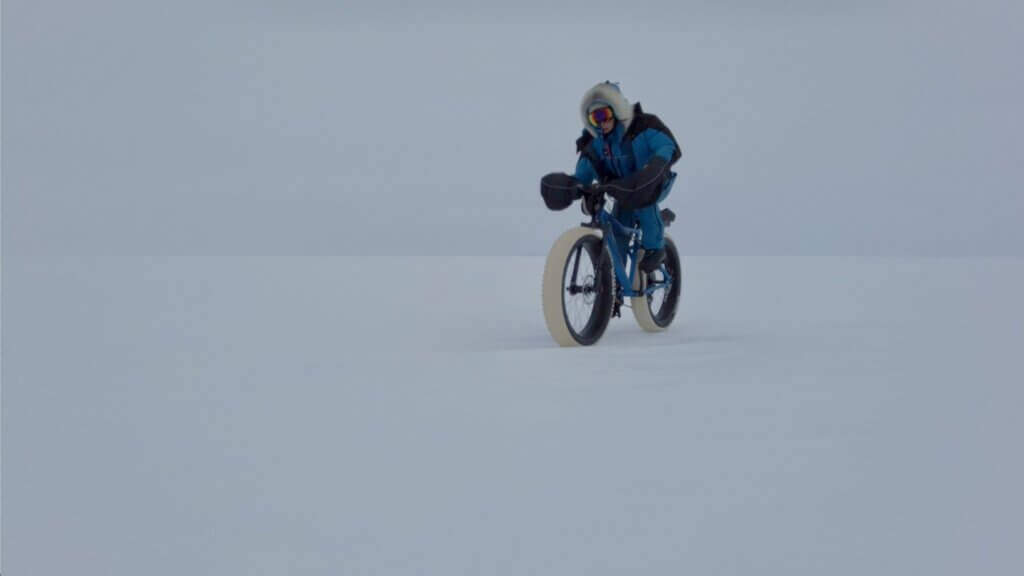

On these surfaces and in these conditions, cycling is a full body workout. My upper body and core need to be stronger for a longer journey (eg – across Antarctica). That is easily fixed as it is something I had not been concentrating on over the last 18 months.
Some of my electronics did not cope with the conditions, despite disclosing minimum operating temperatures on -20C. The battery for my Mac computer, needed to transfer footage to a hard drive, refused to work, the rugged LaCie hard drive was struggling anyway and my cycle computer couldn’t last half a day. My Insta360 X3 worked perfectly, exposed to the elements all day long and my DJI Pocket 2 worked fine, although it was not exposed for that long each day. My GoPro battery life was very short in the cold, but attached to a power bank that was protected in my handlebar mitts, it lasted as long as I needed it.
